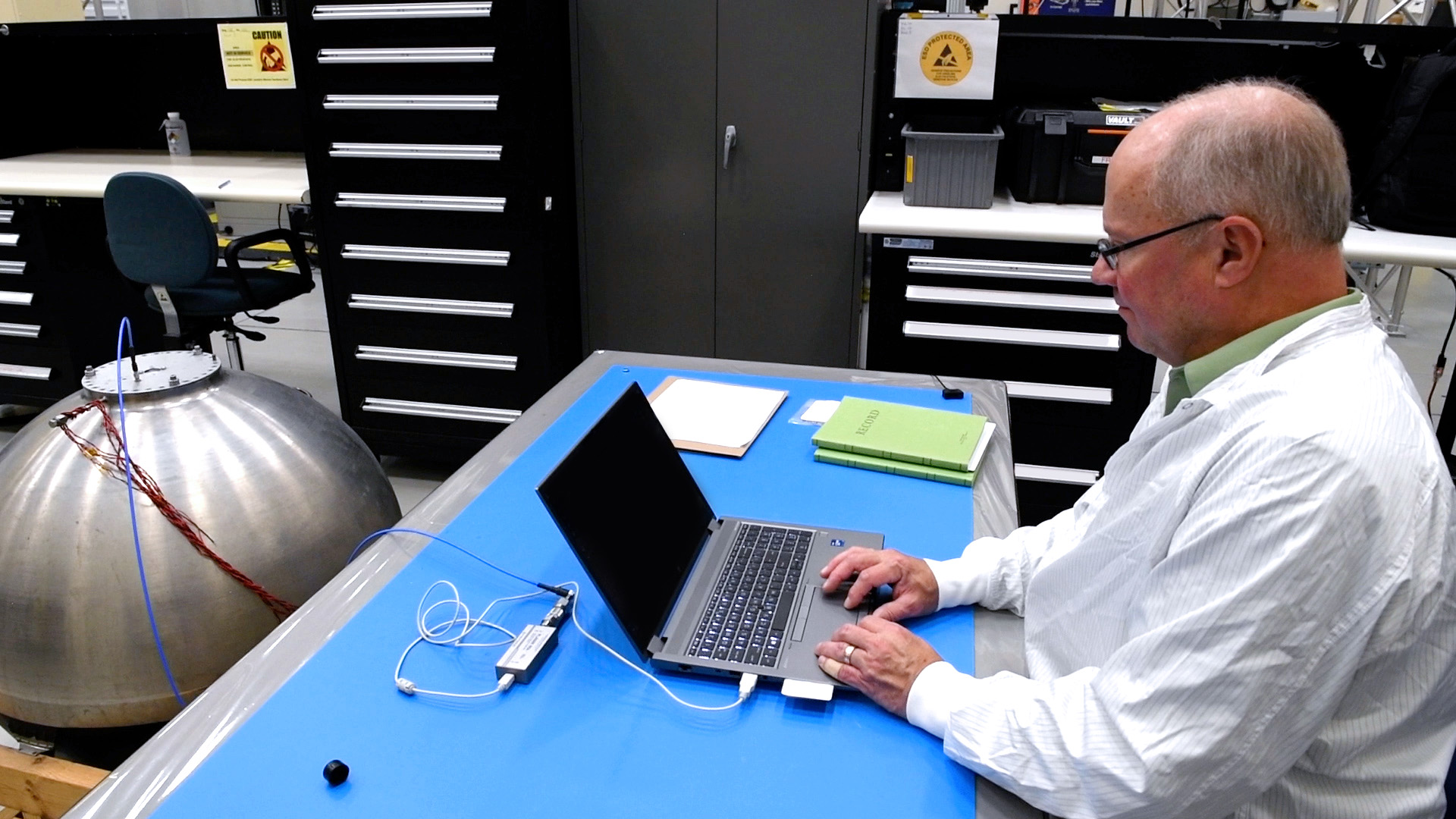4 min read
Preparations for Next Moonwalk Simulations Underway (and Underwater)
Many of the conveniences we have on Earth are still being developed to work in space. For example, we can easily measure the amount of fuel in a car’s tank because gravity causes gas to settle at the bottom. However, in low gravity, fuel can cling to the side walls of a spacecraft’s tank, making it hard to tell how much is left. NASA engineers sought to solve this challenge with a technology called Radio Frequency Mass Gauge (RFMG) that can measure the amount of propellant in tanks in low gravity.
The RFMG technology uses a small antenna sensor inside the spacecraft tank to take a spectral measurement, which covers a range of frequencies in the tanks. Engineers compare this technique to an acoustic resonance – if you tap on the tank, it has a characteristic sound to it depending on how much fuel is inside. When the fill level changes, the sound also changes. Similarly, the electromagnetic wave spectrum in a tank will shift frequencies based on how much fluid is in the tank. Using RFMG technology, engineers can measure the tank spectrum by sending a signal to the tank and measuring the reflected signal over a range of frequencies.
“Being able to measure how much propellant is in the tanks without having to fire up the engines and use propellant is a very useful capability,” said Greg Zimmerli, principal investigator for the RFMG project at NASA’s Glenn Research Center in Cleveland. “The propellant in rocket tanks is very valuable, so just having the ability to gauge the tanks at all times can have extraordinary benefits for the future of space travel.”
The RFMG technology uses a small antenna sensor inside the spacecraft tank to take a spectral measurement, which covers a range of frequencies in the tanks. Engineers compare this technique to an acoustic resonance – if you tap on the tank, it has a characteristic sound to it depending on how much fuel is inside. When the fill level changes, the sound also changes. Similarly, the electromagnetic wave spectrum in a tank will shift frequencies based on how much fluid is in the tank. Using RFMG technology, engineers can measure the tank spectrum by sending a signal to the tank and measuring the reflected signal over a range of frequencies.
Engineers conducted several ground tests of RFMG with Intuitive Machines’ IM-1 lander tanks using liquid nitrogen. Data was also collected from an Intuitive Machines hot-fire test that used liquid oxygen and liquid methane. These tests helped validate a database comparing the data from the simulations to the data from the actual measurements of radio frequency. The ability to compare the simulated and measured radio waves enabled engineers to find the best match and create the best estimate of propellant quantity in the tanks.
The advantage of RFMG technology over traditional bookkeeping methods, is that it produces an actual measurement, whereas bookkeeping can only produce estimates of how much propellant is left in a tank. If there were to be a significant leak, for example, the bookkeeping method would not be able to account for that because there is no way to know how much liquid leaked out of the tanks. However, RFMG can provide an accurate measurement of the propellant quantity in the tank.
The technology will be very beneficial for long-duration missions to the Moon and beyond. For future Artemis and Mars missions that could potentially take multiple years, RFMG can help support missions that need a low gravity gauge. The more engineers test and get better at dynamic fluid measurement, the less of a need there will be for settling burns, meaning they won’t have to use excess propellant to take measurements in the tank.
I think we take it for granted when we’re here on Earth with gravity, and we are in our cars and don’t even think about our fuel gauge. We can just trust it – right? And I think we want to get to that point on these future space missions.

Erin Pisciotta
Engineering Project Manager at NASA Glenn
With space propellant transfers and depots, RFMG has the potential to advance the future of space exploration on the Moon, to Mars, and beyond. The RFMG technology is not only paving the way for future NASA endeavors but also advancing commercial space industry using cryogenic propellants on spacecrafts.
Learn more: https://www.nasa.gov/space-technology-mission-directorate/
By: Gabrielle Thaw

